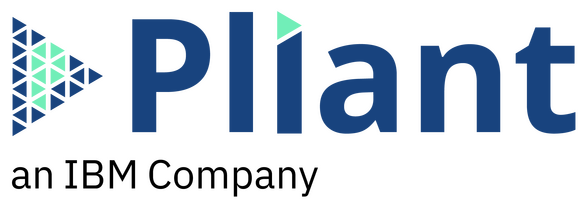A few years ago, Google search trends identified Python as the second most sought-after coding language on the internet. It’s also an official language used by the tech giant Google, themselves. So yeah, it’s a widely popular coding language.
And now, you can use Python on the Pliant low-code automation platform. 🎉
Python FaaS (Function as a Service), the latest feature from the Pliant team, allows you to seamlessly use Python in our low-code platform. You can write Python code from scratch, or even import your own existing code. After that, you can extend it with our industry-leading library of API actions, and publish it securely to your teams—all with the robust automation and orchestration features of Pliant.
This latest innovation is changing the game for workflow creation in a low-code environment. In this blog, we will break it all down in further detail—from use cases to benefits, and everything in between.
But first, let’s see how exactly this new integration works in the Pliant development platform.
Pliant & Python Overview
Whether you have existing Python code or are starting from scratch—our low-code platform has you covered.
Before we jump into the inner workings, let’s look at a high-level overview of the key features:
- Python Script Integration: Easily import your Python scripts into Pliant workflows, making them a seamless part of your automation workflows.
- Dependency Management: Pliant FaaS handles the building of a full deployment environment, fetching all necessary dependencies, creating a runtime, and securely executing the code with zero-touch ease.
- Automation Synergy: Seamlessly extend your Python scripts with other automation steps, leveraging Pliant’s comprehensive library of API action blocks and full-featured orchestration language. Achieve powerful, end-to-end automation. Data moves seamlessly between low-code blocks and the Python script.
- Publish on Automation Center: Share your Python scripts with your team by publishing them securely on the Pliant Automation Center as mini apps. Manage authentications, improve UI with Pliant’s input forms, and audit execution runs and versions.
- API Gateway Integration: Publish your Python scripts as APIs on the Pliant API Gateway for secure, scalable, and standardized access to your automation solutions.
All sounds good, right? Let’s look at how you can leverage Python with our low-code platform.
How it Works
In the Pliant Workflow designer, simply drag a Python FaaS action block into the design pane. When you click on the block, it opens the Python editor window, allowing you to copy and paste your existing Python code.
Your Python script then transforms into a Pliant workflow. Customize the workflow by mapping the variables you wish to pass from the workflow into the Python script. You can leave it as-is, make further edits in Python, or integrate it with any of the numerous API action blocks available in Pliant’s full-featured IDE. Just like any other workflow, you can publish it on the Automation Center as an API, or on the Pliant API gateway.
Behind the scenes, Pliant takes care of identifying the dependencies and libraries your Python script requires to run. It automatically loads them from a repository, managing the runtime environment without any configuration needed from your end.
Executing your new Python workflow is as straightforward as executing any other low-code platform workflow. 💪
Pliant + Python Use Cases
With this new integration, Pliant and Python open up a new world of low-code automation capabilities. With that said, let’s talk about these new applications you can use in your development cycle. ⬇️
- Elevate Your Python Assets: Publish them securely to your users, organize them in a consistent library, improve your user’s experience, and execute them on a high-performance platform.
- Custom Automation: Create custom automation solutions by integrating Python scripts into Pliant workflows. Easily integrate third-party Python libraries and services into your automation workflows, extending your automation capabilities with native Python support.
- Network Automation: Deploy and manage network services with the precision support breadth and customization Python scripting offers.
- Data Processing: Efficiently process, transform, and analyze data using Python scripts and libraries (such as Panda, NumPy, etc.) within Pliant’s automation and orchestration environment.
From quick prototyping to scalable business automation, this integration brings many possibilities tailored to meet the requirements of your future projects.
Benefits of Using Python with Pliant
You’ve seen how it works and ways you can potentially use it in your upcoming projects. Now let’s talk about the main benefits you’ll get by actually plugging this integration into your organization. 😎
First, you can experience the balance between Python scripting and comprehensive automation through Python FaaS. Our integration opens doors to many drag-and-drop automation possibilities thanks to our low-code platform.
Simply put, you can achieve more with your Python scripts with Pliant.
You can also integrate your Python scripts into your existing automation workflows easily. Pliant ensures a smooth and unified approach to automation, making your processes more cohesive and efficient. Then you can confidently share your Python automation solutions using our secure Automation Center and API Gateway.
Collaborate with peace of mind, knowing that your work is protected within a robust and secure environment.
What about scripting simplicity? 🤔
Tap into the familiar scripting capabilities of Python while welcoming the advanced automation features offered by Pliant. Work in a familiar environment, blending the best of both worlds for enhanced productivity. Plus, you can scale your Python-based automation solutions to meet your organization’s growing needs. Pliant provides the flexibility required for your automation initiatives to grow and adapt as your organization expands.
Final Thoughts
With Pliant’s Python FaaS integration, you can unlock the true potential of your Python scripts within the Pliant low-code automation ecosystem. Curious to see how we can help meet your organization’s automation needs?
Get in touch with our team to see how you can put Python FaaS and Pliant to work for you.
